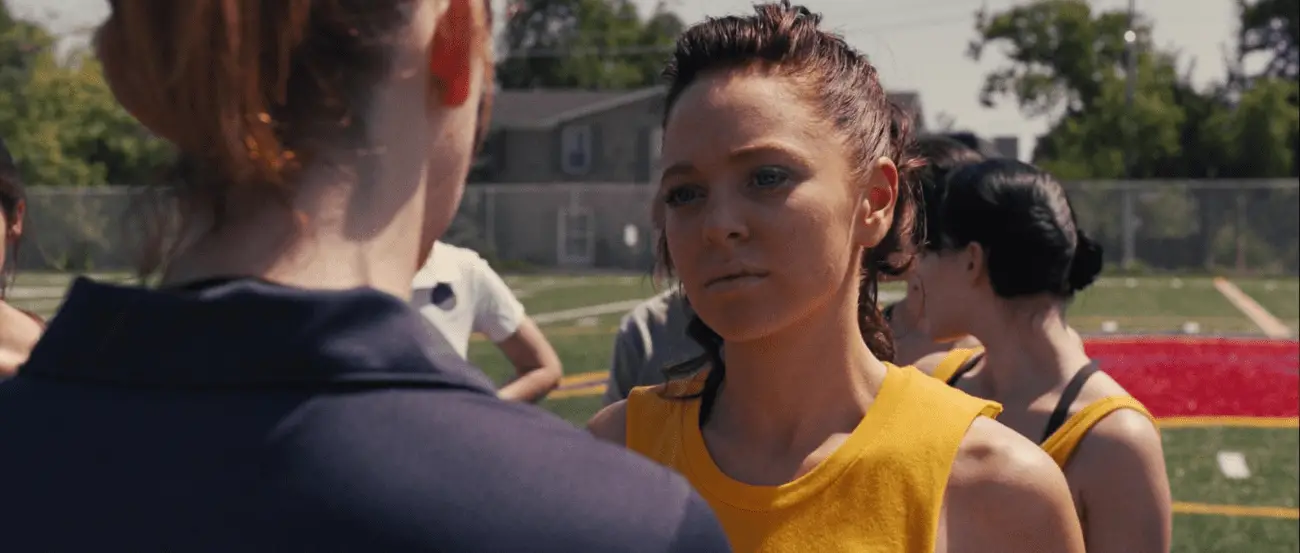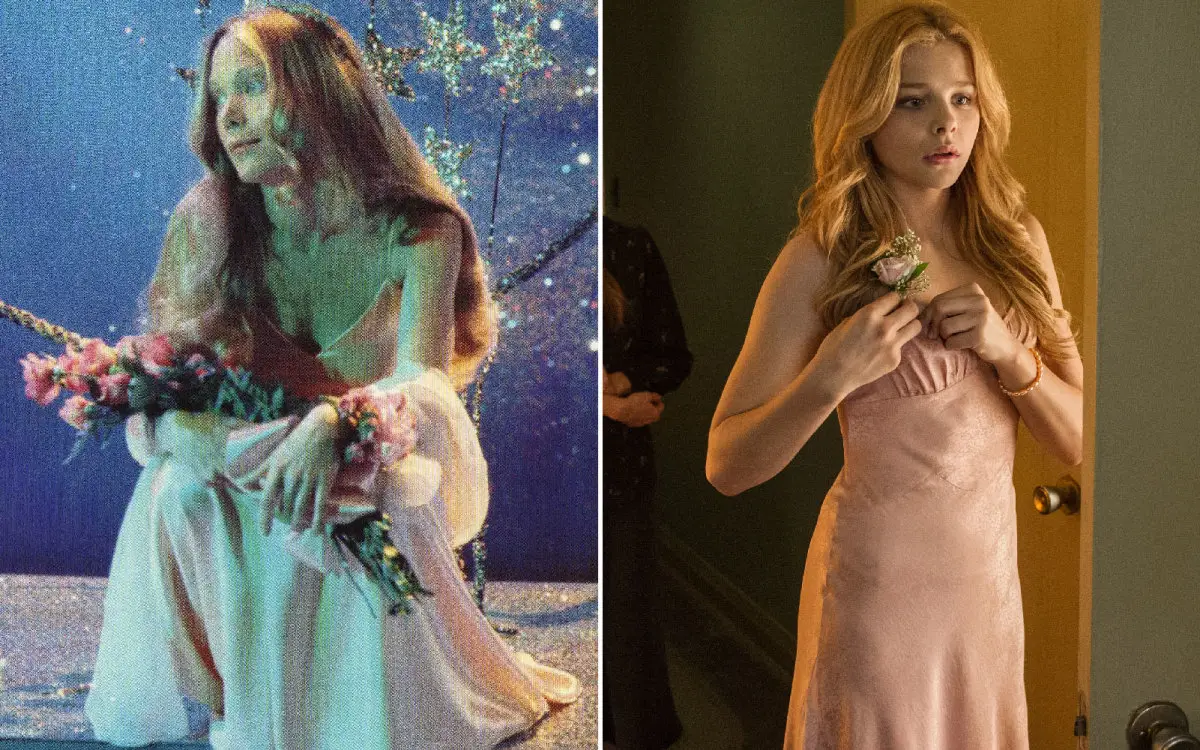When remaking a classic film, it’s easy to feel sceptical. How could anything possibly live up to the glory of the original? Why does every successful film need a remake?
While remakes often get a bad reputation, they can be an opportunity to breathe new life into the story. They can explore different angles and provide character development for beloved figures. However, they may also be seen as simply trying to capitalise on an already popular franchise.
In the dark and twisted world of horror, this battle is clear when discussing the film Carrie. While both adaptations follow the same story, they are considerably distinct from each other. This has sparked the long-winded debate over which film is superior.
To determine which film is right for you, we’ll explore each film’s highs and lows, hoping to answer the long-discussed question: Who did it better?
How did Carrie Become so Popular?

Published in 1974 by renowned author Stephen King, the novel tells the story of a shy girl named Carrie White and her struggles through teenage life. She faces abuse from all angles, from her peers at school to her religious zealot of a mother. Finally pushed to her limit, she takes revenge on all who wronged her, but at a severe cost.
Carrie’s impact on the horror cannot be understated. Stephen King’s first novel changed the scope of the genre forever, inspiring countless works. Two years after publication, Brian De Palma’s film adaptation did the same thing. King then went on to craft other masterpieces of horror, including “It“, “Pet Sematary“, and “Misery“. However, Carrie is still regarded as one of King’s best books.
Carrie 1976

Although released in 1976, the original adaptation of Carrie has lasted the test of time, recognised as a classic. The film’s impact is a testament to its enduring popularity and cultural significance. The film redefined what a horror movie could represent, inspiring the scope of the genre.
The Cast of Carrie (1976)

The cast executes each of their roles flawlessly. Two standout performances include Piper Laurie’s portrayal of Margret White, a frightening presence throughout the film. Betty Buckley’s character, Miss Collins, also deserves special mention. Her unwavering support of Carrie is a delight to see, being a true ally for the young girl.
However, Sissy Spacek steals the film in her portrayal of Carrie. From the offset, we understand that Carrie is an outsider. Subtle movements, such as her closed body language or playing with her hair, immediately make her stand out from the other girls. Yet, this contrasts her other melodramatic poses at the start and end of particular segments. During an interview with GQ in 2018, Spacek revealed that Gustav Dore’s biblical illustrations inspired her performance. Later on, during the prom scene, Spacek allows Carrie’s confidence to shine through. While there is no immediate change in her demeanour, it feels well deserved as we follow Carrie’s journey. It makes Carrie’s transformation into a monster even more heartbreaking when the bucket falls. Following her performance, Spacek was nominated for Best Leading Actress at the 1977 Academy Awards.
The Plot of Carrie (1976)

Throughout the film, the audience almost feels like a fly on the wall as we see Carrie’s battles either at the hands of her maniacal Mother or through the unforgiving teenage girls. The film showcases a raw and intimate snapshot of abuse. We see how Carrie is physically and mentally abused by her Mother, Margaret, as she recites the bible from one hand and drags Carrie, kicking and screaming, towards the prayer closet in the other. Due to Margaret being susceptible to her own “sins”, the abuse is harrowing towards Carrie. In Margret’s eyes, Carrie isn’t her daughter but a vessel of “Satan’s power”.
Additionally, we see the perspectives of other girls throughout the film, most notably Amy Irving’s character, Sue Snell and Nancy Allen’s Chris Hargensen. We explore their motivations and feelings towards Carrie, from Chris deciding to play a cruel prank on the young girl to Sue sacrificing her senior prom for her. These conflicting approaches ultimately lead to both girls succumbing to different conclusions.
The Crew Behind Carrie (1976)

The team behind the film’s production, from the set designers to the crew members, did an exceptional job of bringing the world of Carrie to life.
Colour bursts from all angles throughout the entire film. However, the team’s craftsmanship shines through during the prom scenes. Despite Carrie and Tommy Ross, portrayed by William Katt, spending an enchanting night under the stars of the gymnasium, the audience feels a scene of unease during their slow dance. As the couple spin and dance to Katie Irving’s “I Never Dreamed Someone Like You”, the spinning camera angle alongside the harsh multicoloured lights goes on a little longer than the audience may like. This leads to the viewer feeling uneasy and almost nauseous. The shot was expertly achieved by cinematographer Mario Tosi, placing both actors standing on a platform that rotated in one direction while the camera tracks in the other.
In the later part of the prom scene, as Carrie unleashes her wrath, the audience is suddenly introduced to a jarring split screen. De Palma holds a close-up shot of Carrie as she loses control of her telekinesis while we also watch the students desperately trying to escape her clutches. Furthermore, except for the contrasting blue and red, all colour is removed from the shot. Each of these elements contributes to the chaos, intensifying the scene and gripping the viewer.
Carrie 2013

The 2013 adaptation of Carrie offers a fresh perspective on the classic story, reimagining it within a modern context. The film draws viewers into Carrie’s dark and compelling tale through cutting-edge special effects, an engaging story, and a talented cast. It resonates with existing fans while captivating a new generation of movie enthusiasts.
The Cast of Carrie (2013)

The cast members excel in their roles, with Gabriella Wilde’s portrayal of Sue Snell standing out amongst the actors. Her development was immaculately performed, transforming from another bully to a faithful ally to Carrie.
However, Chloe Grace Moretz perfectly encapsulates Carrie’s role. Through small yet powerful details, we understand that Carrie is a socially awkward outcast. We feel her loneliness and longing for acceptance despite always being torn down by her peers. But once Carrie learns to harness her telekinetic powers, the performance shifts. We explore her darkness and vengeance, which Moretz portrays flawlessly.
The Plot of Carrie (2013)

While the 2013 adaptation follows the same core storyline, it takes a different approach. The film explores the sinister world of bullying but through a modern perspective. A notable example is the infamous shower scene, as the other girls subject Carrie to a horrific act of bullying; Chris pulls out her phone to record it. This moment is explored further when Chris decides to upload the video online and later plays it during the senior prom. While not the only example, technology modernises the script, highlighting how bullying has evolved in today’s world.
The Crew Behind Carrie (2013)

With a modern take on the beloved story, the 2013 adaptation of Carrie treated the audience to the best digital effects, immersing them in the world. From Carrie practising and harnessing her telekinetic powers in her bedroom to her annihilation of the senior prom, the movie is full of outstanding examples.
One detail that will stand out amongst viewers is how gory this new adaptation is compared to De Palma’s. The film never shies away from a drop of blood or an avalanche of destruction. This is most evident during and after the prom scene as we witness Carrie’s descent into darkness.
After everyone in the gymnasium falls to their feet, we watch how each and every girl who terrorised Carrie pays for their unforgiving torment. Students are stabbed to death, smashed against glass and even set on fire. The audience endures every gruesome detail.
Once the school has burnt to the ground, Carrie notices Chris and Billy Nolan flee the scene and hunts them down. Tearing apart the road to reach them, Carrie ensures Chris suffers for her crimes. Her head smashes against the windshield in a spectacularly gruesome shot. The audience experiences every shard piercing her skin through the slow-motion effect. And, of course, the scene concludes with a violent car explosion. In an interview with Art of VFX, Digital Effects Supervisor Eric Robinson said the shot was”tremendously satisfying”, with it being “the most dramatic death in the film”.
Why Each Film may not be Right for you

Despite each film taking vastly different approaches to convey Carrie’s story, each has its fair share of critique and criticism.
Excessive Nudity and Sexualisation (1976)

A prominent critique of the original adaptation is that the film is shot through the male gaze. This is due to the excessive nudity and heavy sexualisation of teenage girls. One notable example is during the opening shower scene, as the audience is invited into a short-lived fantasy of femininity. While the scene subverts the audience’s expectations regarding how the scene would follow, the overuse feels woefully unnecessary. With these elements, it can be an uncomfortable watch for viewers.
Is The Original Movie To “Dated” For Modern Audiences? (1976)

When watching the 1976 adaptation of Carrie today, the film has dated over time. With the development of new technology and CGI elements in films, the modern-day viewer is spoiled for choice. King admitted in a 2010 interview with Florida Weekly that he found “Carrie is dated now.” Due to these constraints, the film may no longer appeal to today’s larger audiences.
Was Moretz The Right Actor For Carrie? (2013)

Moretz has faced criticism as some felt she was “too pretty” to play the titular role in the 2013 remake. During an interview with Teen Vogue, Moretz admitted that she was almost passed over for the role.
Moretz said: “When I was auditioning for Carrie, I was told, ‘Well, look, you’re too young, you’re too pretty, you’re too accomplished.”
Despite earning the role, many critics agreed, feeling Moretz didn’t accurately portray it. One could argue that the actor’s appearance should be a significant consideration during the casting process. However, others could see the “too pretty” comment as a disservice to the actor’s portrayal of a beloved and complex character.
Certain Character Lack The Intended Development (2013)

Throughout the 2013 film, some characters lack the intended character development. They can often be seen more as ideas than fleshed-out individuals. One example of this is Chris Hargensen, portrayed by Portia Doubleday. While executing the role of the nasty high school bully well, her character shifts dramatically. Towards the film’s end, she becomes maniacal, losing her grip on reality. What could have been a welcome element to her character, instead seems too drastic of a change as the character’s development fails to justify it.
So, Which Carrie Should I Watch

Despite analysing both the highs and the lows of each film, it would be unfair to say which film is superior. While following the story of Carrie, both films are distinct. If you were to choose just one, it would be down to personal preference. If you prefer an intimate story with a stellar cast, the 1976 version may be your film of choice. But if you prefer a gnarly and immersive horror experience, give the 2013 adaptation a try. Yet, the best viewing experience would be to watch both films, contrasting their differences.
Final Thoughts
Carrie remains a timeless and thought-provoking film that delves into themes of social isolation, abuse, and the consequences of unchecked power. Through captivating performances and iconic scenes, each film effectively portrays Carrie’s emotional turmoil and psychological complexity. Whether viewed as a compelling coming-of-age story or a chilling horror film, Carrie continues to resonate with audiences, solidifying its status as a classic.



